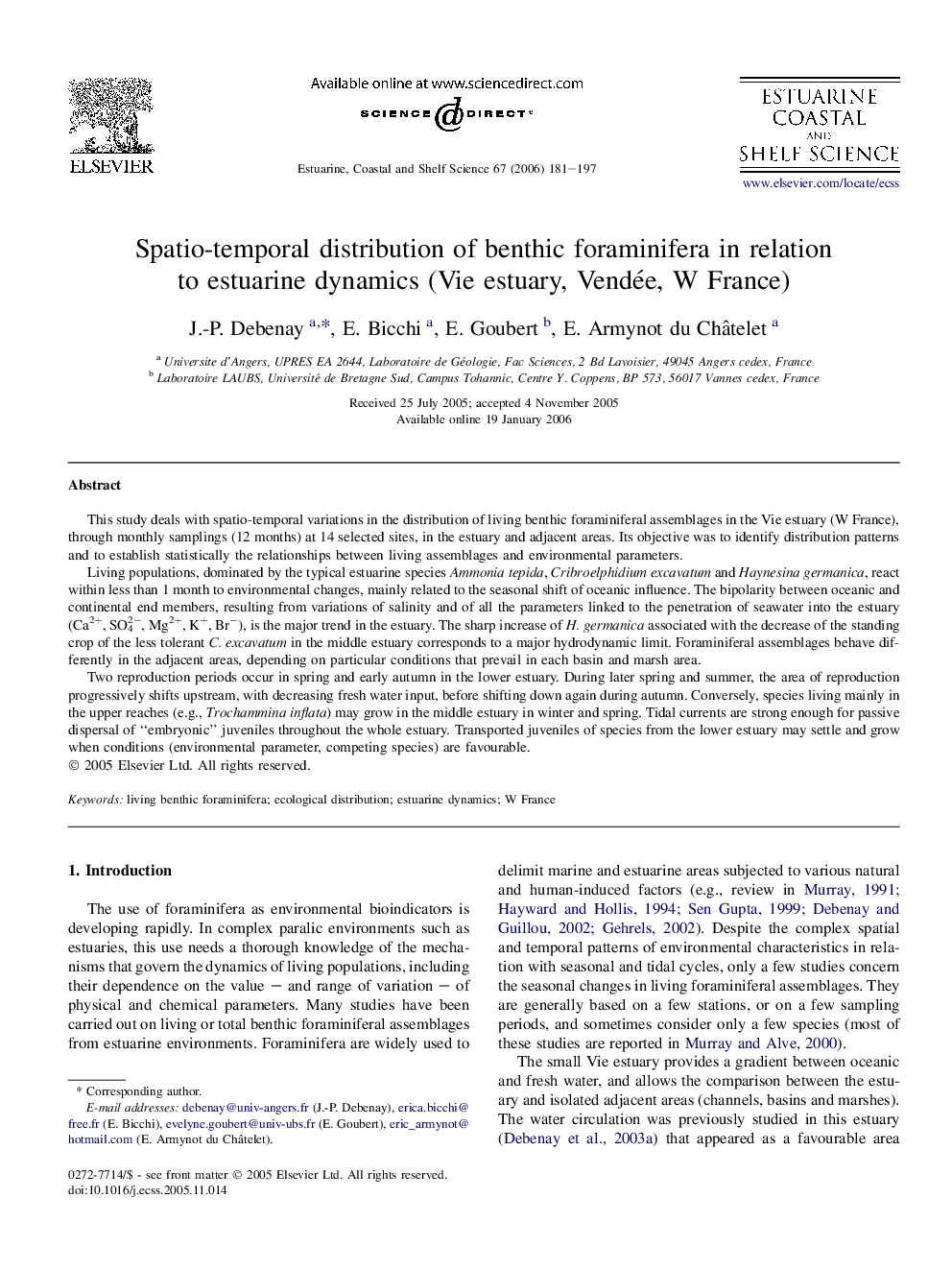| کد مقاله | کد نشریه | سال انتشار | مقاله انگلیسی | نسخه تمام متن |
|---|---|---|---|---|
| 4542329 | 1626714 | 2006 | 17 صفحه PDF | دانلود رایگان |

This study deals with spatio-temporal variations in the distribution of living benthic foraminiferal assemblages in the Vie estuary (W France), through monthly samplings (12 months) at 14 selected sites, in the estuary and adjacent areas. Its objective was to identify distribution patterns and to establish statistically the relationships between living assemblages and environmental parameters.Living populations, dominated by the typical estuarine species Ammonia tepida, Cribroelphidium excavatum and Haynesina germanica, react within less than 1 month to environmental changes, mainly related to the seasonal shift of oceanic influence. The bipolarity between oceanic and continental end members, resulting from variations of salinity and of all the parameters linked to the penetration of seawater into the estuary (Ca2+, SO42−, Mg2+, K+, Br−), is the major trend in the estuary. The sharp increase of H. germanica associated with the decrease of the standing crop of the less tolerant C. excavatum in the middle estuary corresponds to a major hydrodynamic limit. Foraminiferal assemblages behave differently in the adjacent areas, depending on particular conditions that prevail in each basin and marsh area.Two reproduction periods occur in spring and early autumn in the lower estuary. During later spring and summer, the area of reproduction progressively shifts upstream, with decreasing fresh water input, before shifting down again during autumn. Conversely, species living mainly in the upper reaches (e.g., Trochammina inflata) may grow in the middle estuary in winter and spring. Tidal currents are strong enough for passive dispersal of “embryonic” juveniles throughout the whole estuary. Transported juveniles of species from the lower estuary may settle and grow when conditions (environmental parameter, competing species) are favourable.
Journal: Estuarine, Coastal and Shelf Science - Volume 67, Issues 1–2, March 2006, Pages 181–197